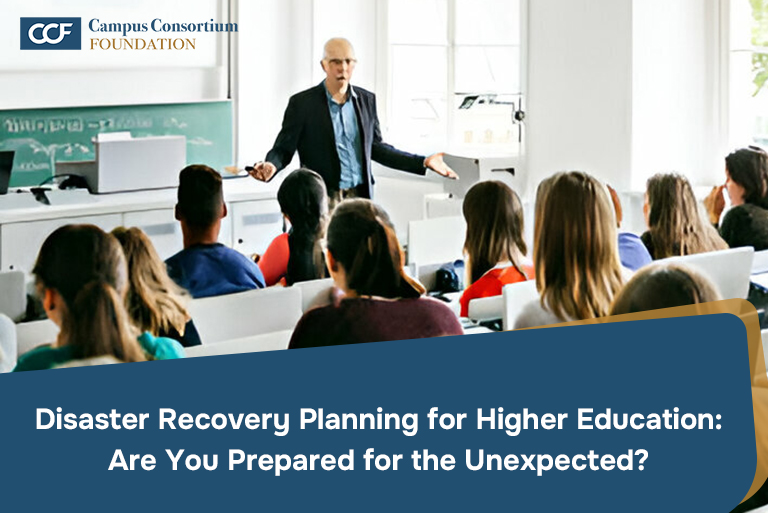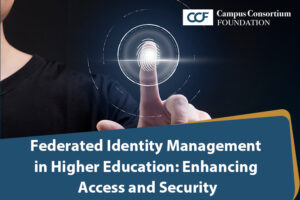No one enjoys dwelling on worst-case scenarios, but in higher education, where technology underpins everything from student records to virtual classrooms, preparation is non-negotiable. A natural disaster, a cyberattack, or an unexpected outage could disrupt your campus in an instant if you’re caught off guard. At the Campus Consortium Foundation (CCF), we’re committed to helping institutions like yours stay resilient. Here’s a practical guide to crafting a disaster recovery plan that protects your data, ensures continuity, and keeps your campus community thriving—no matter what comes next.
Why Disaster Recovery Is Critical for Higher Education
Colleges and universities are entrusted with vast amounts of sensitive information, student data, research, financial records—and serve as vital hubs for learning and innovation. When disaster strikes, the consequences can be significant:
- Data at Risk: Without safeguards, critical records like enrollment details or research findings could be lost.
- Operational Delays: Extended downtime can halt classes, registration, or administrative functions, frustrating students and staff.
- Reputation on the Line: Stakeholders expect reliability—unresolved disruptions can undermine confidence in your institution.
Through our work with partner institutions, we’ve seen how proactive planning makes all the difference. Let’s explore how you can build that same resilience.
Steps to Create an Effective Disaster Recovery Plan
You don’t need to be an IT expert to get this right. Here’s a clear path forward:
- Evaluate Your Vulnerabilities
Start by identifying the threats your campus faces. Are you in a flood-prone area? Is cybersecurity a weak spot? Knowing your risks helps you tailor a plan that fits your reality. - Prioritize Key Systems
Determine which systems are essential to your operations—your student information system, learning management platform, or financial tools. These should be at the top of your recovery list. - Define Recovery Goals
How quickly must you restore services—an hour, a day? How much data can you afford to lose? Setting clear recovery time and data loss targets keeps your plan focused and actionable. - Leverage Technology
Smart tools can lighten the load. Offsite backups, such as cloud storage, protect your data from physical threats, while regular system maintenance reduces vulnerabilities. - Assemble Your Response Team
Designate who will lead the charge during a crisis—assessing damage, initiating recovery, communicating updates. Document their roles and procedures to ensure a coordinated response. - Test and Refine
A plan untested is a gamble. Run simulations to see how it holds up, then adjust based on what you learn. Review it annually to account for new challenges or system changes.
How CCF Supports Your Preparedness
At the Campus Consortium Foundation, we’re a nonprofit dedicated to empowering educational institutions through collaboration and shared expertise. Our community-driven approach offers:
- Practical Guidance: Resources and best practices drawn from our network of higher education partners.
- Collaborative Solutions: Opportunities to connect with peers and experts to address your institution’s unique challenges.
- Technology Insights: Advice on optimizing your systems for resilience, based on real-world experience.
From small colleges to large universities, we work alongside institutions to strengthen disaster readiness through collective knowledge and support. We’re here to help you not just recover but emerge stronger.




